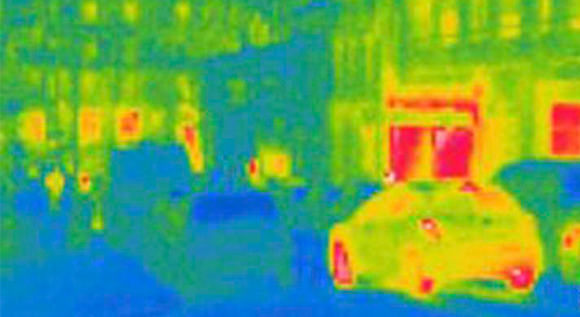Key factor for a successful Energy Transition
The ambitious target has been set: energy consumption in Germany is to drop by 20 per cent by 2020 compared to 2008. To achieve this target, the Federal Government has launched the National Energy Efficiency Action Plan (NAPE). Following the principle "Supply information - Provide support - Demand action" the plan aims to motivate businesses and society to use energy more efficiently and sparingly.
 © Mauritius Images / BSIP
© Mauritius Images / BSIP
Alongside the expansion of the renewables, energy efficiency is the second pillar of the Energy Transition. The question here is: how efficiently do we use electric power and heat in Germany? The better we become at this, the less energy we need to generate. That saves money, ensures that the energy supply stays as highly reliable as it already is, and helps Germany to achieve its climate targets. Each one of us can make a participation and benefit – for example by energy-efficient renovation of buildings and switching to energy-efficient household appliances. Tapping the available efficiency potentials is also a matter of economic performance: even today, the cost of electricity is an important factor influencing the attractiveness of a business location. Efficient use of energy is going to be crucial to Germany maintaining its international leading position. New business models, products, and innovation and investment in efficiency-enhancing measure can help German businesses to score on global markets.
National Action Plan for greater energy efficiency
Potentials for more efficient use of energy are huge – in the buildings sector as much as in industry and in the transport sector. With its National Action Plan on Energy Efficiency, introduced in late 2014, Germany launched a comprehensive strategy that applies all these levers in support of achieving its ambitious efficiency and climate targets. The Plan provides for a bundle of measures that are intended to save a total of 390 to 460 petajoules of energy by 2020. In terms of straight figures, that is roughly equivalent to the combined primary energy consumption of the States of Bremen and Thuringia. According to calculations made by experts, the envisaged package of immediate actions could trigger additional investment of about 70 to 80 billion euros by 2020.
Three steps toward more efficiency
Because improving energy efficiency is a task for society as a whole, the NAPE motivates all stakeholders – consumers, businesses and local authorities – to use energy more efficiently. One of the prime targets in this context is to enhance awareness of the economic implications of energy-efficiency measures, which often pay for themselves even today. The measures follow the principle of "Supply information - Provide support - Demand action":
1. Supply information
Only if the general public, businesses and local authorities know where to look for saving potentials can they actually tap them. One focus is thus on improving the available information, communication and advice. A good example of this is the "SME Energy Consulting programme": higher subsidies are provided to motivate small and medium-sized enterprises to take advantage of professional energy consulting services as the basis for investing in more efficient technologies. Around 17,000 businesses have already taken counselling under the terms of this programme between 2008 and 2013. Each euro of public money spent on the programme generated 16 to 29 euros of private investment.
2. Provide support
A second focus of the NAPE is targeted promotion of investment. The buildings sector offers major potentials for using energy more efficiently . Because that is where nearly 40 per cent of all final energy is consumed – mostly for heating and hot water. Germany wants to achieve a virtually climate-neutral building stock by the year 2050; that will involve reducing the primary energy demand by 80 per cent. To this end, investment in the energy efficiency of buildings, especially for energy-efficient retrofits, is being specifically encouraged. The most important instrument in this context is the CO2 Building Renovation Programme, with the aid of which more than 3.8 million residential units have already been built or renovated since 2006. However, assistance has also been provided for energy-saving measures in over 2,100 buildings used by local authorities and welfare institutions – such as office buildings, schools and day care centres. The positive effect for the climate: since 2006, assisted investments have reduced CO2 emissions by around 7.6 mn tons every year. The funds available under the programme currently amount to 1.8 billion euros per year. The total investment triggered by these measures – around 190 billion euros – benefits especially small and medium-sized enterprises and the handicraft trades: each year, assisted funding creates and safeguards some 300,000 jobs. With the NAPE the decision was taken to extend and further expand the CO2 Building Renovation Programme until 2018.
3. Demand action
The third principle "Demand action" means for example: large companies will in future be required to analyse their energy consumption in the form of energy audits. How much energy are they using for what? How can they improve their efficiency and which opportunities are there for savings? Federal Minister for Economic Affairs and Energy Sigmar Gabriel summarizes the benefits of this approach as follows: "Gaining comprehensive information from energy audits about energy-saving potentials within the company is in any company's own interests. Well informed businesses invest more in energy efficiency and so also encourage their competitors to do the same."

